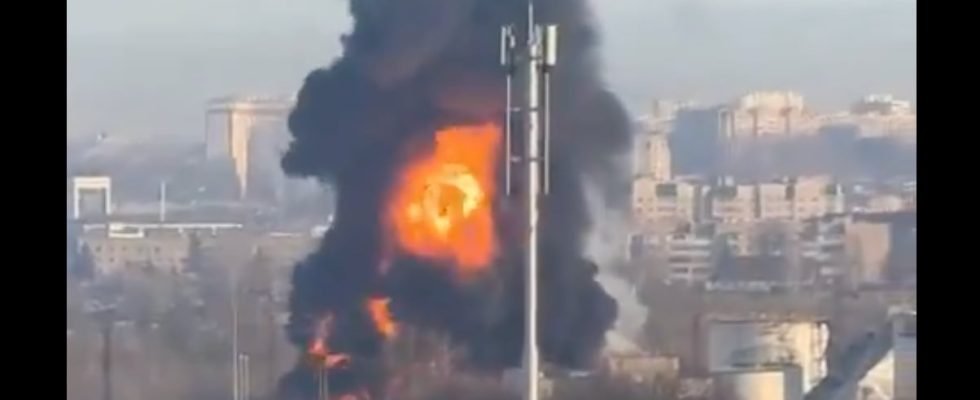With its characteristic engine noise, the Ukrainian drone splits the sky above the city of Ryazan, some 200 kilometers southeast of Moscow. Arriving at its destination, it suddenly dives towards the oil refinery, before crashing in a spray of flames. This scene, captured on video on March 13, would become almost commonplace in recent weeks in Russia. The day before, two oil installations in the Orel and Nizhny Novgorod regions – respectively 160 and nearly 1,000 kilometers from the Ukrainian border – were victims of fires following previous attacks.
Since mid-January, these have multiplied at a worrying rate for Moscow, with more than a dozen infrastructures affected. “Hydrocarbons are the main source of income for the Russian economy, points out General (2S) Jérôme Pellistrandi, editor-in-chief of the National Defense Magazine. With this fuel war, the Ukrainians want to hit where it hurts.” According to data published by Rosstat (Russia’s federal state statistics service) in December 2023, the oil and gas sector alone represents more than 17% of Russian GDP and covers more than 34% of federal state revenues. A strategic target for the Ukrainians.
Increasing the cost of war
On March 12, the attack on the Norsi refinery of the Lukoil group, the fourth largest in Russia, in Kstovo, led to the shutdown of half of production. The facility alone has the capacity to refine approximately 17 million tonnes of crude per year (or 340,000 barrels per day). “It is likely that Russia’s refining capacity has been temporarily reduced by the multiple Ukrainian drone strikes against refineries across the country,” a British intelligence note already pointed out three days earlier. “Repairs will probably take longer than usual, as Western sanctions prevent the importation of certain necessary components.”
Bad news for Russia, already facing an increase in demand on its domestic market, particularly linked to the start of the planting season for farmers. Faced with soaring prices at the pump, the Russian government banned gasoline exports on March 1 for a period of six months. “Russia was already facing difficulties on its domestic market and the Ukrainian strikes further aggravated the situation,” summarizes Marc-Antoine Eyl-Mazzega, director of the Energy and Climate Center at the French Institute of International Relations. The blockage of exports is a way for the government to strengthen supplies to the Russian market in order to lower prices.”
The measure could, however, weigh on Russian finances. “A drop in exports of refined products will result in a drop in revenues,” adds the researcher. “These Ukrainian operations aim to increase the cost of the Russian military and budgetary effort.” Reacting to the recent attacks on March 13, Vladimir Putin considered that the main objective of the Ukrainian strikes is “to interfere in one way or another with the normal process of expressing the will of citizens” , ahead of the presidential election from March 15 to 17.
Persistent threat
On a military level, the impact of these strikes remains more limited. “This will not be enough to deprive Russian armored vehicles of fuel. On the other hand, it could disrupt the logistics of the army which has colossal needs in this area,” says General Pellistrandi. Without forgetting the indirect effects. “The strikes could push the Russians to allocate more anti-aircraft defense systems to protect their refineries and fuel depots, which would de facto force them to dilute the resources deployed on the front,” notes the officer.
The threat to refineries should in any case persist in the coming months. Over the course of the conflict, Ukraine has assembled its own fleet of drones capable of striking deep into the Russian war machine. “The category of long-range kamikaze drones is developing, with a range of 300, 500, 700 and 1,000 kilometers. Two years ago, this category did not exist,” said February 12 to Reuters, Mykhailo Fedorov, Deputy Prime Minister and Minister of Digital Transformation of Ukraine. Relying on around ten companies manufacturing this type of machine, kyiv plans to produce several thousand in 2024. Their targets are already clearly indicated.
.
